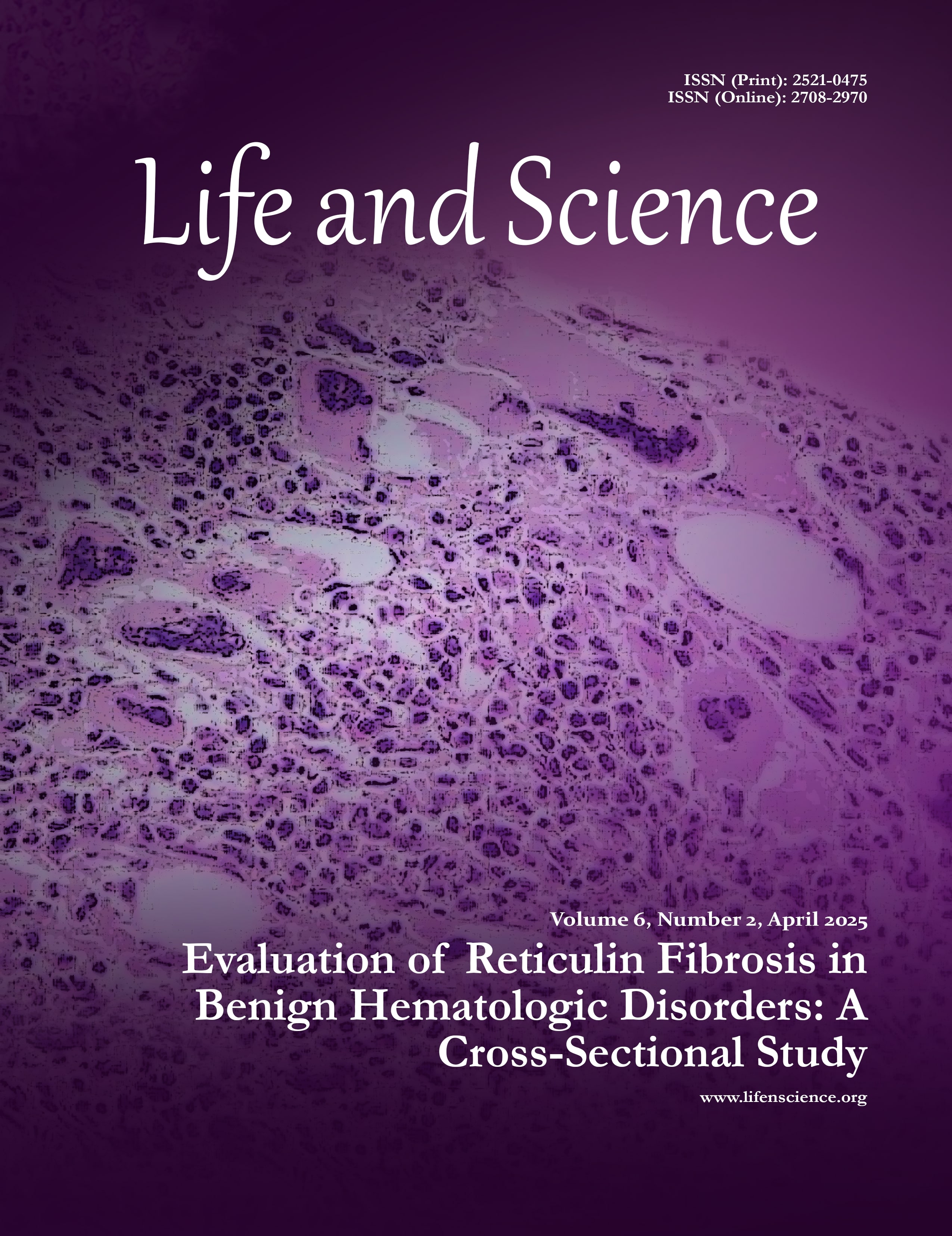Bioaccumulation of Microplastics: From Environmental Pollutants to Multisystemic Toxicity in Humans
Abstract
Plastic products are ubiquitous, and their tendency to break down into smaller pieces has led to their extensive
distribution through oceans, terrestrial environments, and atmospheric winds. Microplastics are plastic
particles ranging in size from 5 millimeters to 1 micrometre, while nanoplastics are smaller, typically measuring
under 1,000 nanometres. The continuous shredding of larger plastic debris into smaller pieces has resulted in
significant and persistent environmental pollution. The projected rise in microplastics as contaminants due to
their widespread presence across ecosystems and living organisms has attracted increasing scientific and
societal attention. Microplastics have already been found in plant life, animal species, and human tissues.1
The release of microplastics and nanoplastics into the air as they fragment in the environment is a concern, as is
their human exposure via digestive ingestion, inhalation, and dermal contact. In 2022, researchers compared
two modes of human exposure to microplastics: microplastic exposure from seafood consumption and inhaling
plastic fibres through breathing air at home. Invisible plastic fibres shed by upholstery or clothing were
identified as a greater threat to human exposure than seafood consumption.1-3 The microplastics, as airborne
particles, with their potential to penetrate human tissues, raise the question of what effect, if any, they have on
human health.
In 2022, plastic particles were reported in the lungs and blood of living humans.3-4 The presence of micro- and
nanoplastics in human blood implies systemic distribution, with the potential for these particles to reach
organs and tissues throughout the body. Chronic exposure to microplastics and their long-term physiological
effects are emerging as potential risk factors for multisystemic adverse outcomes. Both particles have been
reported to interact and trigger toxicological effects, including dysbiosis in the gut and oxidative stress,
inflammatory, and immune responses in human tissue. A recent study from the University of New Mexico has
found up to 10 times higher concentrations of microplastics in the human brain among individuals with
dementia than in those without the condition.2 Using electron microscopy and chemical analysis, researchers
discovered nanoparticles, mainly polyethylene, in brain tissue samples, and surprisingly, microplastic
bioaccumulation is more concentrated in the brain than in the liver or kidneys, possibly due to damage to the
blood-brain barrier.2-4 Although causation has not been confirmed, scientists warn of micro- and nanoplastics'
role in exacerbating neurodegenerative diseases such as Alzheimer's, Parkinson's, and prion disease, through
mechanisms involving oxidative stress, mitochondrial dysfunction, neuroinflammation, protein aggregation,
and impaired brain waste removal systems, such as the glymphatic system.2-4 A recent cardiac study highlighted that two plastic types were consistently found in atherosclerotic plaque samples: polyethylene (PE) and polyvinyl chloride (PVC) in patients undergoing carotid endarterectomy.4 Researchers suggest that
physicochemical differences, such as molecular weight, polarity, and shape, may make these plastics more
likely to accumulate in vascular tissues and contribute to inflammation, potentially leading to a higher
incidence of major cardiovascular events.4 Animal studies have shown that microplastics can induce
cardiovascular toxicity, including promoting thrombosis, impeding angiogenesis, and causing structural cardiac
issues; however, the levels used in animal experiments were significantly higher than those observed in human
samples, limiting a direct comparison.4,5 Although current findings are primarily derived from observational
studies and do not establish definitive causal relationships, a growing body of evidence suggests associations
between microplastic exposure and impacts on human health. While further mechanistic and longitudinal
studies are necessary to clarify the nature and extent of these effects, in light of emerging evidence, adopting a
precautionary approach to reducing plastic exposure is crucial.
Reducing microplastic exposure requires minimizing single-use plastics, improving waste management
systems, and promoting sustainable product alternatives. The healthcare sector must protect public health by
prioritizing education, supporting continued research, fostering greater public and policy awareness, driving
behavioural change, promoting sustainable choices, and advocating for stronger regulations to reduce plastic
production and usage, thereby minimizing microplastic contamination in food systems and the environment.
Editor-in-Chief
How to cite this: Alamgir W, Shan H. Bioaccumulation of Microplastics: From Environmental Pollutants to Multisystemic Toxicity in Humans. Life and Science. 2025; 6(2): 154-155. doi: http://doi.org/10.37185/LnS.1.1.946
Copyright (c) 2025 Wasim Alamgir, Hina Shan

This work is licensed under a Creative Commons Attribution-NonCommercial 4.0 International License.

















